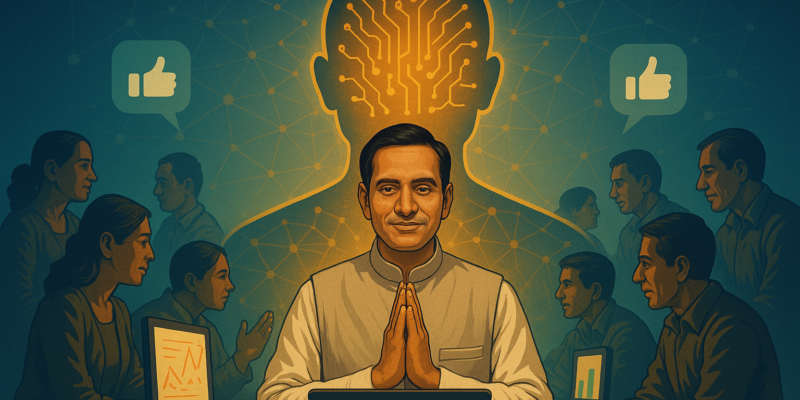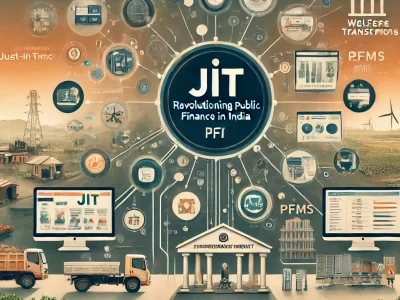Understanding Voter Sentiments Through AI-Powered Tools: The New Age of Indian Elections

In the world’s largest democracy, understanding the pulse of the people has always been the holy grail of politics. As India gears upcoming elections, political parties and strategists are increasingly turning to a powerful ally—Artificial Intelligence. Today, AI-powered tools are decoding voter sentiments with startling precision, offering real-time insights that can shape campaign strategies, messaging, and even candidate selection.
The Digital Transformation of Indian Politics
With over 990 million registered voters and increasing smartphone penetration (expected to cross 1.2 billion devices in 2025), India is generating massive volumes of digital data every day. Social media, WhatsApp forwards, news websites, survey calls, and local-language platforms have become a goldmine for understanding voter behavior—if one has the tools to mine it.
From Natural Language Processing (NLP) algorithms analyzing speech patterns and online chatter to machine learning models predicting voter behavior based on past preferences, AI has become an indispensable tool in modern political strategy.
How AI Understands What India Thinks
AI sentiment analysis tools process unstructured data—comments, tweets, call transcripts, media coverage—and classify them as positive, negative, or neutral. But in the Indian context, it’s far more complex. Sentiment differs not just by region but also by caste, religion, class, and age.
Political consulting firms in India are increasingly building sophisticated AI-driven systems to decode complex voter sentiments across regions and communities. These tools analyze vast amounts of data—from call center transcripts to social media conversations and field surveys—to identify key issues, perceptions about local leaders, and emerging caste or community narratives. In recent elections, AI models have successfully flagged early signs of voter dissatisfaction in specific constituencies, such as growing frustration over unemployment or local infrastructure gaps, which were initially missed by traditional ground teams but later validated during on-ground outreach.
These AI insights are also enabling real-time strategy adjustments. Dashboards powered by machine learning track public sentiment shifts across media platforms, WhatsApp groups, and local language content, helping political teams tweak campaign messaging, advertising tone, and even candidate profiles. By identifying micro-trends—like a surge in youth discontent in urban pockets or a shift in women voters’ concerns—campaigns can deploy targeted interventions that resonate more deeply with the electorate. This data-backed agility is fast becoming a game-changer in Indian elections.
Case Study: Telangana Assembly Elections 2023
One of the most notable uses of AI sentiment tracking was during the Telangana assembly elections in 2023. The ruling Bharat Rashtra Samithi was confident of retaining power, but AI sentiment trackers showed early warning signs—online conversations in districts like Nalgonda and Karimnagar were turning negative, particularly among youth discussing unemployment and lack of skill centers. The Congress, monitoring this sentiment, ramped up its “Youth Jodo” campaign in these areas and tweaked its manifesto to promise district-level employment hubs.
By election day, Congress swept the state with 64 seats, proving that listening—really listening—to voter sentiment pays off.
Beyond Sentiments: Predicting Turnout and Voter Fatigue
Another strength of AI lies in predictive modeling. AI can now predict which booths or constituencies may see low turnout due to voter fatigue, disenchantment, or lack of mobilization. In the 2024 general elections, AI tools flagged low engagement in urban booths of Bengaluru South, a traditionally high-turnout area. BJP’s local teams swung into action with door-to-door campaigns and tech-friendly rally invites, boosting turnout by 4% compared to 2019.
These micro-interventions would be impossible without AI flagging the right signals from the noise.
Challenges and Limitations
While AI is powerful, it’s not infallible. Regional languages, sarcasm, code-switching (Hindi-English mix), and cultural nuances often trip up even the most advanced sentiment engines. Moreover, data privacy and ethical AI usage remain grey areas in Indian politics. There are concerns about surveillance and misinformation if AI tools fall into the wrong hands.
That said, companies are building more context-aware models, and there’s a push toward transparent AI governance frameworks. The Election Commission of India is also exploring partnerships with tech firms to use AI in monitoring hate speech and misinformation on platforms like Facebook and YouTube.
The Road Ahead: AI as a Democratizing Force?
AI in Indian politics is no longer a futuristic concept—it’s the present. As political narratives evolve in real time, the ability to understand and adapt to the voter’s heartbeat—filtered through thousands of tweets, calls, and conversations—might just be the difference between winning and losing.
And that, perhaps, is the most human thing AI can do in democracy: help leaders listen better.
By leveraging AI not just as a tool but as a bridge between citizens and leadership, Indian democracy is entering a bold new chapter—where data, not just drama, decides destiny.








